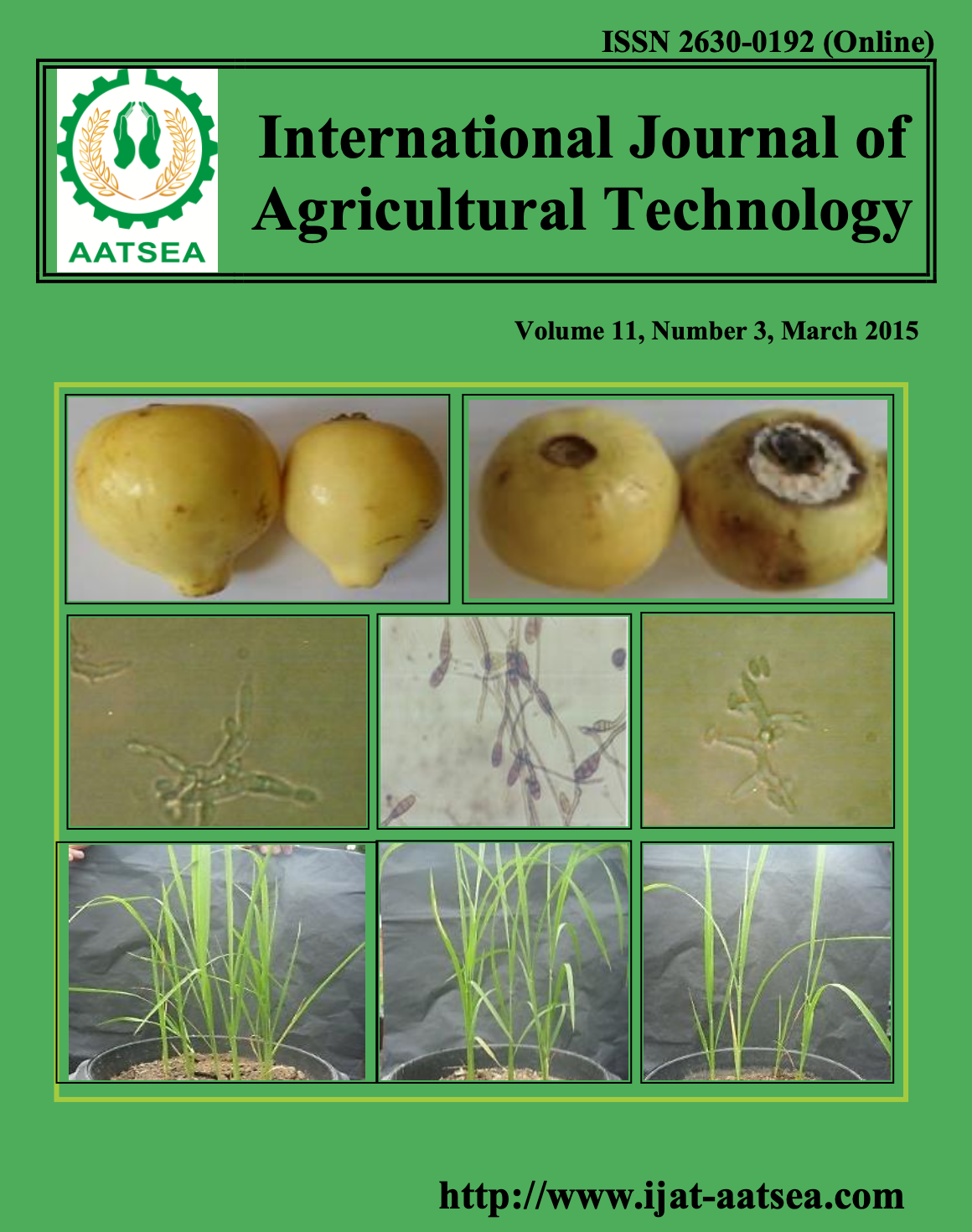Achieving Farm Multifunctionality through a Small-Scale Biodiverse, Integrated and Organic (BIO) Method of Farming
Main Article Content
Abstract
Article Details

This work is licensed under a Creative Commons Attribution-NonCommercial-NoDerivatives 4.0 International License.
References
Arguimbau, N. C. (2010). Peak food: can another green revolution save us?. Retrieved from http://www.countercurrents.org/arguimbau310710.htm31.
Bradsher, K. and Martin, A. (2008, 30 April). The food chain: shortages threaten farmers’ key tool: fertilizer. New York Times.
Buringh, P. (1989). Availability of agricultural land for crop and livestock production. In Pimentel, D. and Hall, C.W. (Eds), Food and Natural Resources. San Diego: Academic Press. pp. 69-83.
Campbell, C. J. and Laherrère, J. H. (1998). The End of Cheap Oil. Scientific American March 1998. pp. 77- 83.
CIA (2006). Philippines. World Factbook. Retrieved from http://sportsforum.ws/sd/factbook /geos/rp.html#Econ.
Cocannoer, J. A. (1980). Weeds, Guardians of the soil. Retrieved from http://www.naturalsequencefarming.com/press/Weeds%20guardians%20of%20the%20Soil%20%283%29.pdf.
Gattinger, A., Muller, A., Haeni, M., Skinner, C., Fliessbach, A., Buchmann, N., Mäder, P., Stolze, M., Smith, P., Scialabba, N. H. and Niggli, U. (2012). Enhanced top soil carbon stocks under organic farming. Proceedings of the National Academy of Sciences 109:18226-31.
Grain (2009). The International food systems and the climate crisis. Retrieved from http:www.grain.org/go/climatecrisisrefs.
Hepperly, P. (2005). Organic farming sequesters atmospheric carbon and nutrients in soils. Retrieved from http://www.strauscom.com/rodale-whitepaper/.
Jeavons, J. C. (2001). Biointensive sustainable mini-farming: the challenge. Journal of Sustainable Agriculture 19:49-63.
Jeavons, J. C. (2001). Biointensive sustainable mini-farming: ii. perspective, principles, techniques and history. Journal of Sustainable Agriculture 19(2):65-762001.
Leggett, J. (2010). Society ignores the oil crunch at its peril. Retrieved from http://www.guardian.co.uk/environment/cif-green/2010/feb/10/oil-crunch-peril.
Leu, A. (2007). Organic agriculture can feed the world in organic farming. Retrieved from http://www.rimisp.org/getdoc.php?docid=6440.
Lindenlauf, M. M. (2009). Organic agriculture and carbon sequestration: possibilities and constraints for consideration of organic agriculture within accounting system. Retrieved from .ftp://ftp.fao.org/docrep/fao/012/ak998e/ak998e00.pdf.
Mae-Wan, H. ( 2008). Organic cuba without fossil fuels. SIS Press. Reteieved from http://www.i-sis.org.uk/full/OrganicCubawithoutFossilFuelsFull.php
McDermott, M. (2011). Facts on fracking, pros and cons of hydraulic fracturing for natural gas Retrieved from http://www.treehugger.com/fossil-fuels/facts-on-fracking-pros-cons-of-hydraulic-fracturing-for-natural-gas-infographic.html.
Mendoza, T. C. (2008). Why food prices increase and What can be done.Philippine Journal of Crop Science 33:87-101.
Rodolfo, K. (2008). “Peak Oil”: The global crisisof diminishing petroleum supply, and its implications for the Philippines. Asian Studies Journal 41:41-101.
Cohen, J. E. (1995). Population growth and earth’s human carrying capacity. Science 21:341.
Doran J. W. (1996). Soil, health and sustainability. In: Advances in Agronomy. Academic Press.
Drinkwater L. E. et al. (1998). Legume-based cropping systems have reduced carbon and nitrogen losses. Nature 396:262-265.
Ecology Action (1996). Worldwide loss of soil and a possible solution. 1pp. Based on the
statistics given in: Summary Report 1992 National Resources Inventory. 1994.
Ecology Action (1999). Biointensive sustainable mini-farming and other approaches may
be able to remove all excess greenhouse effect-causing atmospheric carbon dioxide
while producing more food. 7 pp.
Fraser, E. D. G. and Rimas, A. (2010). Feast, famine and the rise and fall of civilizations. Retrieved from http://www.rodaleinstitute.org/20100720_empires-of-food.
Godilano, E. C. (2009). Climate change impacts on agriculture and fishery in the Philippines .Department of agriculture. Information Technology Center for Agriculture and Fishery (ITCAF) Enterprise Geospatial Information Systems for Analysis and Learning Laboratory.
Heydarian, J. H. (2015). Philippines' shallow capitalism: westernization without prosperity
Retrieved from http://www.huffingtonpost.com/richard-javad-heydarian/philippines-shallow-capit_b_6441868.html.
Kumar, B. M. (2006). Carbon sequestration potential of tropical homegardens. Tropical Homegardens: A time-tested example of sustainable agroforestry. Springer 185-204.
Mendoza, T. C. (2001). Pursuing Debates in Food Security in the New Millennium. SEARCA Professorial Chair lecture. Department of Agronomy, College of Agriculture, UP Los Baños, Philippines.
Mendoza, T. C. (2008). Why food prices increase and What can be done.Philippine Journal of Crop Science 33:87-101.
Mendoza, T. C., Ofreneo, R., Villegas, P. M. and Pamintuan, R. (2015). Rebuilding Agriculture: Can the Philippines Tame AEC 2015, WTO and Climate Change Challenges?. In press.
Sales, R. F., Lasco, R. D. and Banaticla, R. N. (2005). Carbon storage and sequestration potential of smallholder tree farms on Leyte Island, the Philippines. ACIAR Smallholder Forestry Project - Redevelopment of a Timber Industry Following Extensive Land Clearing: Proceedings from the End-of-Project Workshop. pp 129-141.
Schnitzer, M. (1991). Soil organic matter — the next 75 years, soil science. chapter 3: Why carbon sequestration in agricultural soils. Agricultural practices and policies for carbon sequestration in soil. Washington, DC: Lewis Publishers. pp. 151:41-58
Zamora, D. (1999). Carbon Dioxide (CO2) storage potential of multistorey agroforestry systems in Mt. Makiling. (Master’s Thesis). University of the Philippines Los Baños College, Laguna, Philippines.


